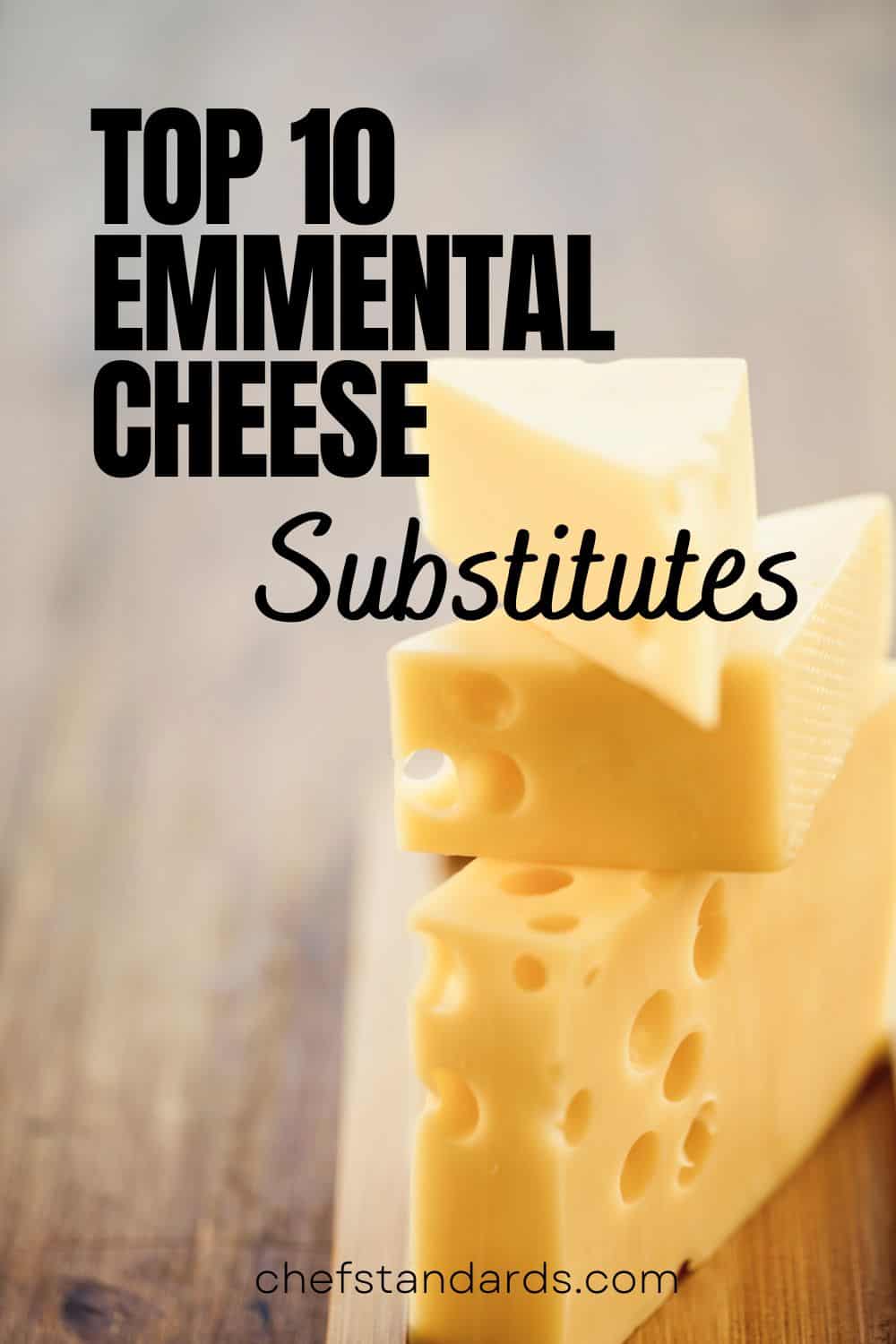From delicious hamburgers and cheeseburgers to lasagne and pizza, cheese is one of the most essential ingredients in so many dishes.
I myself am a cheese person and can not imagine a day without having some, either on its own or incorporated in some cheesy recipe.
However, I have to say that Swiss Cheese has a special place among my favorite types of cheeses. And one of the favorites is definitely emmental cheese, a cheese that originates in the Swiss city that bears the same name.
But sometimes I get bored of its taste, or just don’t have any at hand. In those specific situations, some emmental cheese substitutes come in handy. And believe me, there are plenty of great alternatives.
1. Gruyere
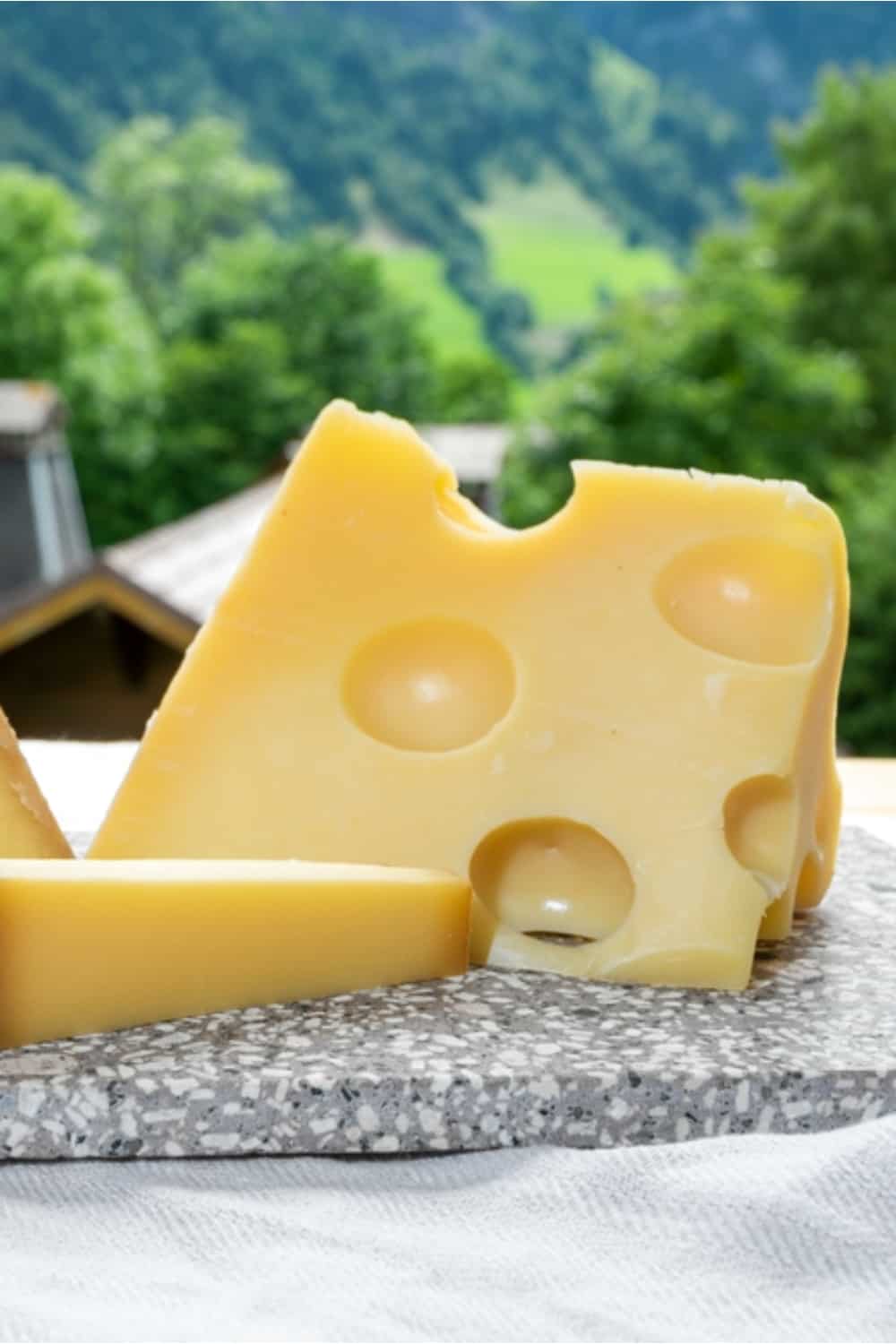
What could be a better alternative than cheese that is of the same Swiss heritage? Like emmental, gruyere cheese is also made from cow’s milk and has many similarities, so it is logical that it takes the first place.
Similarities:
• Gruyere cheese has a rich, nutty, and slightly sweet flavor, which is a flavor profile very similar to that of Emmental cheese.
• Like Emmental cheese itself, Gruyere cheese also melts exceptionally well.
• You can find it at most cheese shops, supermarkets, and online retailers, which makes it widely available.
Differences:
• Although the flavor profile is similar, Gruyere cheese has a bit stronger and more pronounced flavor than Emmental cheese, which can alter the overall flavor profile of certain dishes.
• The texture of Gruyère can be slightly denser and less hole-ridden compared to Emmental, which can negatively impact the overall texture of certain dishes.
• Also, Gruyère cheese is generally more expensive than Emmental cheese.
How To Use As A Substitute:
Since Gruyere cheese has a similar flavor and melts well like Emmental cheese, you can use it in most recipes that require Emmental cheese.
Aside from that, another great thing is the fact that you can also use it in a 1:1 ratio.
You only have to consider the slightly different texture.
Namely, since Gruyere cheese has smaller and fewer holes compared to Emmental, so you might consider using a cheese grater to create smaller grated pieces of Gruyère, resembling the texture of Emmental more closely.
Just like Emmental cheese, Gruyere is one of the best cheeses for tacos.
Finally, I have to emphasize that both Emmental and Gruyere cheese are used in making one of the most famous grilled cheese sandwiches, a Croque Monsieur.
See Also: 12 Finest Gruyere Substitutes Suited For Any Dish
2. Comte Cheese
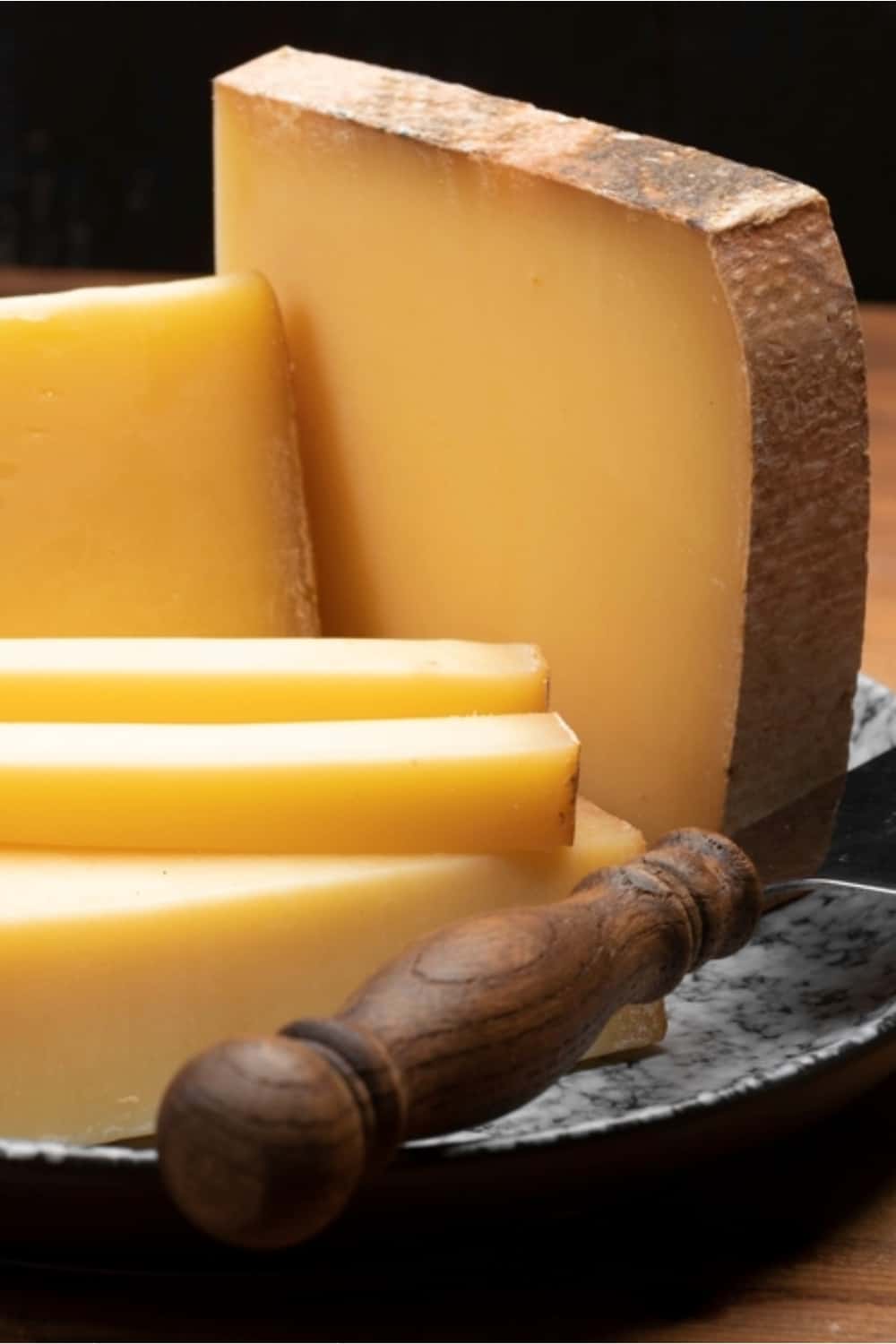
Comte cheese is actually very similar to Gruyere cheese, and it is also known as Gruyère de Comté. However, it doesn’t come from Switzerland. In fact, it is a French cheese that originates from the Jura Massif region in eastern France.
Similarities:
• Although it has a little more complex flavor profile, Comte cheese has a very similar flavor to Emmental cheese and Gruyere cheese.
• Comte cheese also has great melting properties, whereas it creates a smooth, creamy texture when heated.
• Like Emmental cheese, it is widely available at most grocery stores and supermarkets.
Differences:
• Comte cheese has a more complex flavor, i.e. it has a broader range of flavors, including nuttiness, sweetness, and hints of butter and herbs.
• Emmental cheese is known for its distinctive large holes or “eyes”, whereas Comté cheese typically has smaller and fewer holes.
• It is also generally more expensive than Emmental cheese.
How To Use As A Substitute:
Like Gruyere cheese, Comte cheese can also be used in most dishes that require Emmental because of the similar flavor. You can use it in the same amount as well.
Comte cheese melts beautifully, so it can be a great option for gratins and casseroles. It also works wonderfully in quiches and frittatas due to its complex flavor profile.
You can also shave or grate it over salads and soups to add a burst of flavor.
Finally, my favorite way to use it is to simply add it to my sandwich or panini. It pairs well with cured meats, roasted vegetables, and condiments like mustard or pesto.
3. Fontina Cheese
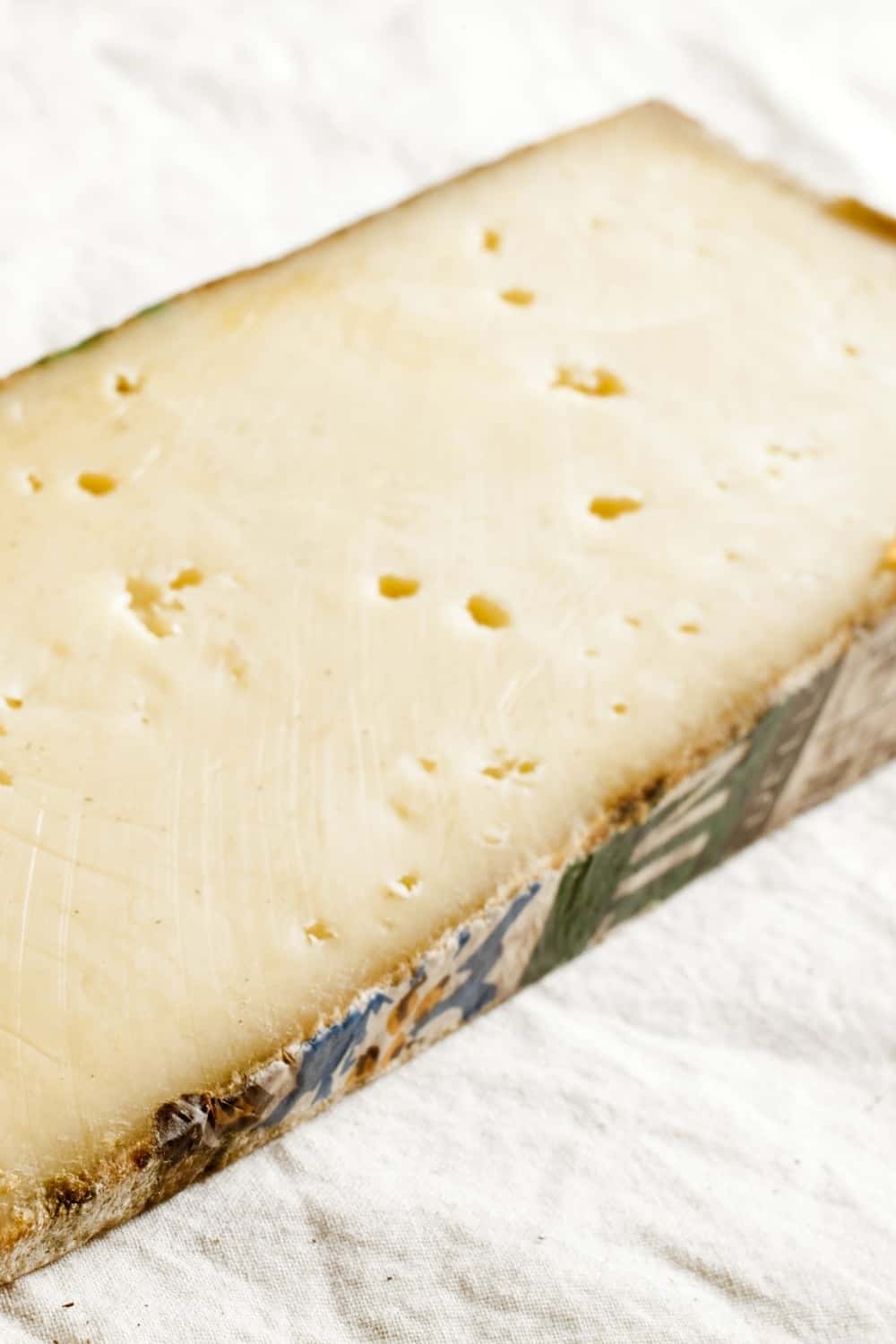
Another great substitute for Emmental cheese comes from Italy this time. Fontina cheese is a popular cheese that originated in the Aosta Valley region of northern Italy.
Similarities:
• Like Emmental cheese, Fontina cheese also has wonderful melting properties.
• It is also a very versatile cheese that can be used in a variety of culinary applications.
• You can find Fontina cheese in many grocery stores, specialty cheese shops, and online retailers.
Differences:
• Fontina cheese has a rich and nutty flavor with mild earthy undertones, and it differs from the milder and slightly sweet taste of Emmental.
• Unlike Emmental, which has distinctive large holes or “eyes”, Fontina has a smooth and supple consistency with occasional small holes.
• Fontina cheese may be more expensive than Emmental cheese in some cases, which could impact the budget for certain recipes.
How To Use As A Substitute:
Although it is a little bit drier than Emmental cheese, Fontina cheese melts quite well when heated. If you are in the hurry, you can melt it in microwave.
This makes it a great alternative in some recipes, including gratins, casseroles, and pasta bakes.
Since it has that slight sweet component to its flavor profile, it compliments roasted vegetables while also enhancing the taste of soups and sauces.
You can also incorporate it into quiches and frittatas, as well as in savory tarts and pies.
One of my favorite ways to enjoy Fontina cheese is to simply cut it into bite-sized cubes or slices and arrange it alongside other cheeses, fruits, nuts, and charcuterie on a cheese board or platter.
Just take note that it is a bit stronger than Emmental cheese, so you don’t want to overdo it in your recipe when using as a substitute.
4. Cheddar Cheese

Now this is the one that you probably all heard about. It is a popular cheddar cheese and it can be a great alternative. It originated in the village of Cheddar in Somerset, England and it is one of the most widely consumed and recognized cheeses globally.
Similarities:
• Cheddar cheese is highly versatile and can be used in a wide range of recipes.
• You can find cheddar cheese at most grocery stores and supermarkets, as well as in cheese shops.
Differences:
• Cheddar cheese has a distinct flavor profile that differs from the milder, nutty taste of Emmental.
• It has a firm and sometimes crumbly texture, especially when aged. This texture differs from the semi-hard and elastic texture of Emmental, which is known for its characteristic holes or “eyes”.
• Although it has melting properties to some extent, cheddar cheese doesn’t melt as well as Emmental.
How To Use As A Substitute:
Although the best cheddar cheese is the one that is aged well, I wouldn’t recommend you to use it when substituting with Emmental cheese because of its strong and distinct flavor.
Instead, opt for a younger version because it tastes milder, and you already know that Emmental is also a mild cheese.
Also, it is best to avoid using it in recipes that require melting because it has bad melting properties when compared to Emmental.
However, one way around this is to make a casserole with layers of sauce and cheese. Take note that this is only a recommendation.
You can use cheddar cheese in sandwiches and burgers, as it adds a rich and tangy flavor. It is also great as a snack on cheese platters and you can use it in your baked dishes. It is one of the best cheeses with turkey sandwich.
5. Raclette
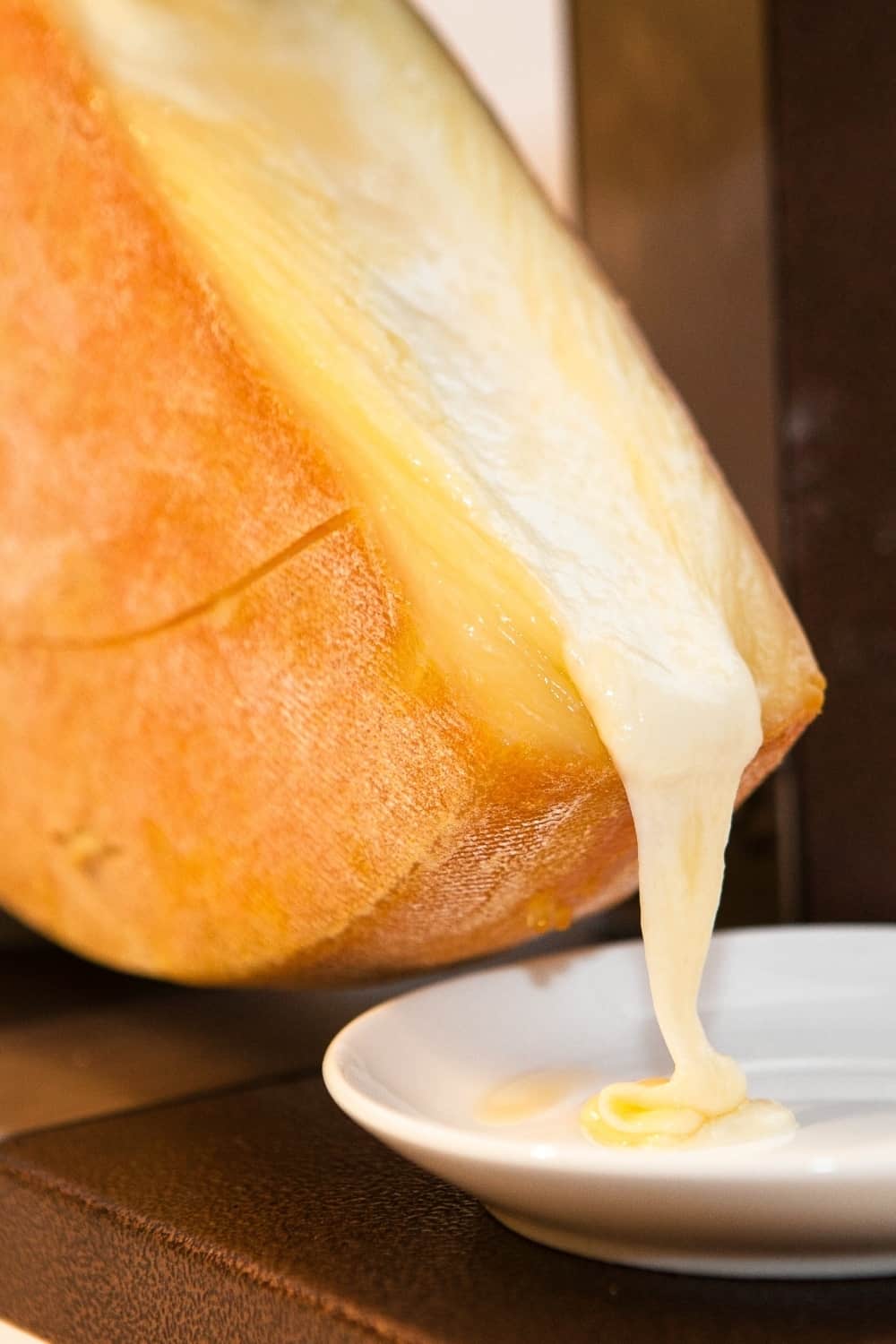
This cheese is both French and Swiss because it originated in the French-speaking regions of Switzerland and France. Nonetheless, it can be an excellent alternative to Emmental.
Similarities:
• Raclette cheese has excellent melting properties, similar to Emmental.
• Like Emmental, it is very versatile and can be used in various ways.
Differences:
• While Raclette cheese melts well, its texture may not be identical to Emmental. Emmental has a semi-hard texture with characteristic holes or “eyes”, whereas Raclette has a semi-firm, pliable texture.
• It has its own unique flavor profile, which may not perfectly match the milder and nuttier taste of Emmental.
How To Use As A Substitute:
When it comes to using Riplette cheese, it all comes down to melting. This is because Riplette is considered one of the best-melting types of cheese out there.
The most authentic way to use Raclette cheese is to recreate the traditional Raclette dining experience.
Melt the Raclette cheese and scrape it onto boiled or roasted potatoes, pickles, cured meats, and other accompaniments. This communal style of dining creates a warm and flavorful meal.
You can also use it in dishes like gratins, fondues, croque-monsieur, and toasted sandwiches. The melted Raclette cheese adds a creamy and flavorful element to these dishes.
This cheese is also great as a topping for baked potatoes, and it also pairs well with other ingredients such as cured meats, pickles, and onions.
6. Gouda
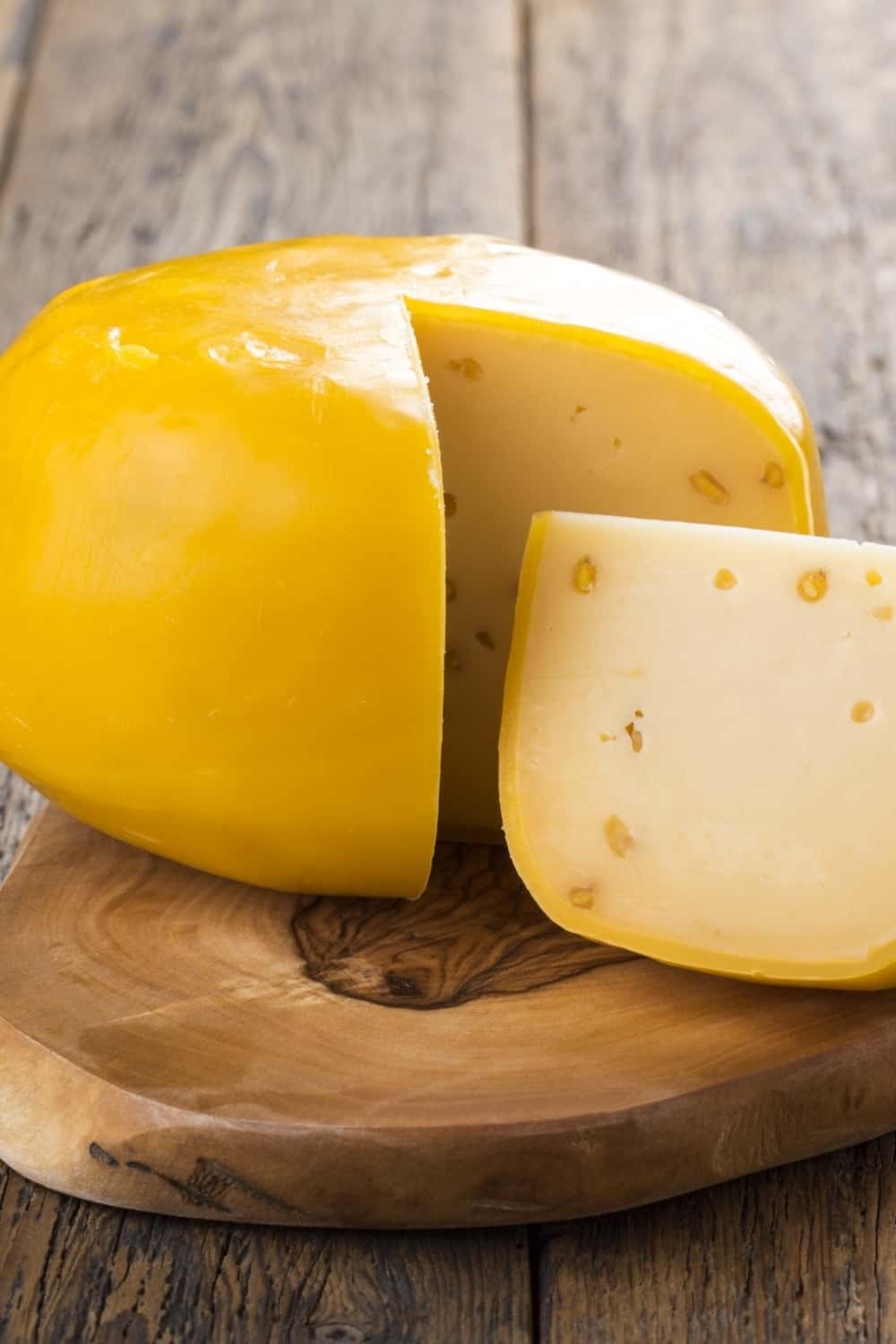
Gouda is a semi-hard cheese that originated in the Netherlands. It is named after the city of Gouda, which historically served as a trading hub for this cheese. Like Emmental, it is also made from cow’s milk.
Similarities:
• Gouda cheese also melts well and develops a smooth and creamy texture when heated.
• Although the flavor profile is not exactly the same, gouda cheese also has a distinctively mild and nutty flavor, which can be a pleasant alternative to the slightly sweet and nutty taste of Emmental.
• Gouda cheese is also quite available, as you can find it at most grocery stores and cheese shops. On top of that, it is quite affordable as well.
Differences:
• Gouda cheese has a creamy and slightly crumbly texture, whereas Emmental has a firmer and more elastic texture with distinct holes or “eyes”.
• There are a lot of variations of gouda cheese based on the aging process, so you can find very aged gouda that doesn’t have so many similarities with Emmental.
How To Use As A Substitute:
First of all, it is important that you choose a younger version of gouda cheese because it has a milder flavor that resembles that of Emmental quite well.
When you do that, you can use gouda in most recipes that require melting. Use it in fondues, either to substitute Emmental cheese or along with it.
I personally like to put some gouda on top of my crusty bread or pair it with light, fruity wine flavor in order to enjoy it.
However, gouda is everything but limited. You can use it on grilled cheese sandwiches, burgers, cheesy dips and sauces, pizza, salads and gratins, and so on.
7. Parmesan
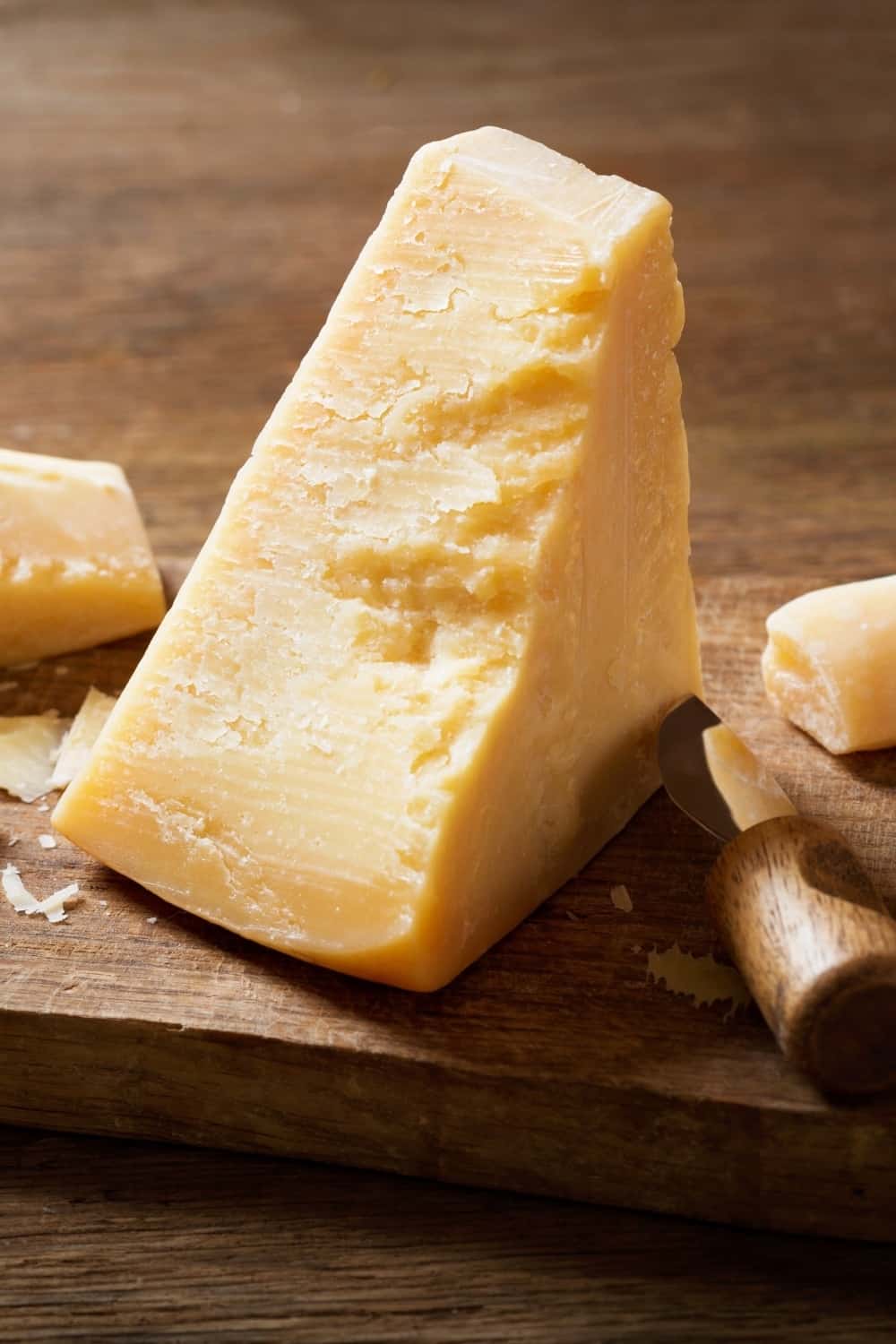
It is another popular cheese that can be a decent substitute. Parmesan cheese, also known as Parmigiano-Reggiano, is a hard, granular cheese that originated in Italy. It is named after the regions of Parma and Reggio Emilia, where it has been produced for centuries.
Similarities:
• Like Emmental cheese, Parmesan also has that specific nutty flavor, which can be beneficial for some types of dishes where Emmental is desired.
• Parmesan is also a very versatile cheese and can be used in a wide range of recipes.
• It is widely available at most grocery stores and supermarkets.
Differences:
• Although the taste is similar, Parmesan cheese has a much more pronounced flavor, especially when aged.
• The texture is quite different since Parmesan is a hard cheese with a somewhat granular texture, whereas Emmental has a semi-hard and elastic texture with distinct holes or “eyes”.
• Parmesan has a lower moisture content compared to Emmental, which makes its melting properties worse.
How To Use As A Substitute:
First, Parmesan has a stronger flavor when compared with Emmental, so you don’t want to overdo it when using it as a substitute.
If you get the right quantity, you can use it in many dishes that require Emmental.
The only exception is those dishes where melting properties must be good because Parmesan just doesn’t possess them.
However, you can always grate some Parmesan cheese over salads or soups for some extra flavor. It also works great in pasta dishes, such as spaghetti, fettuccine, or penne, as well as in pizza, flatbreads, breads, and many savory pastries.
8. Jarlsberg
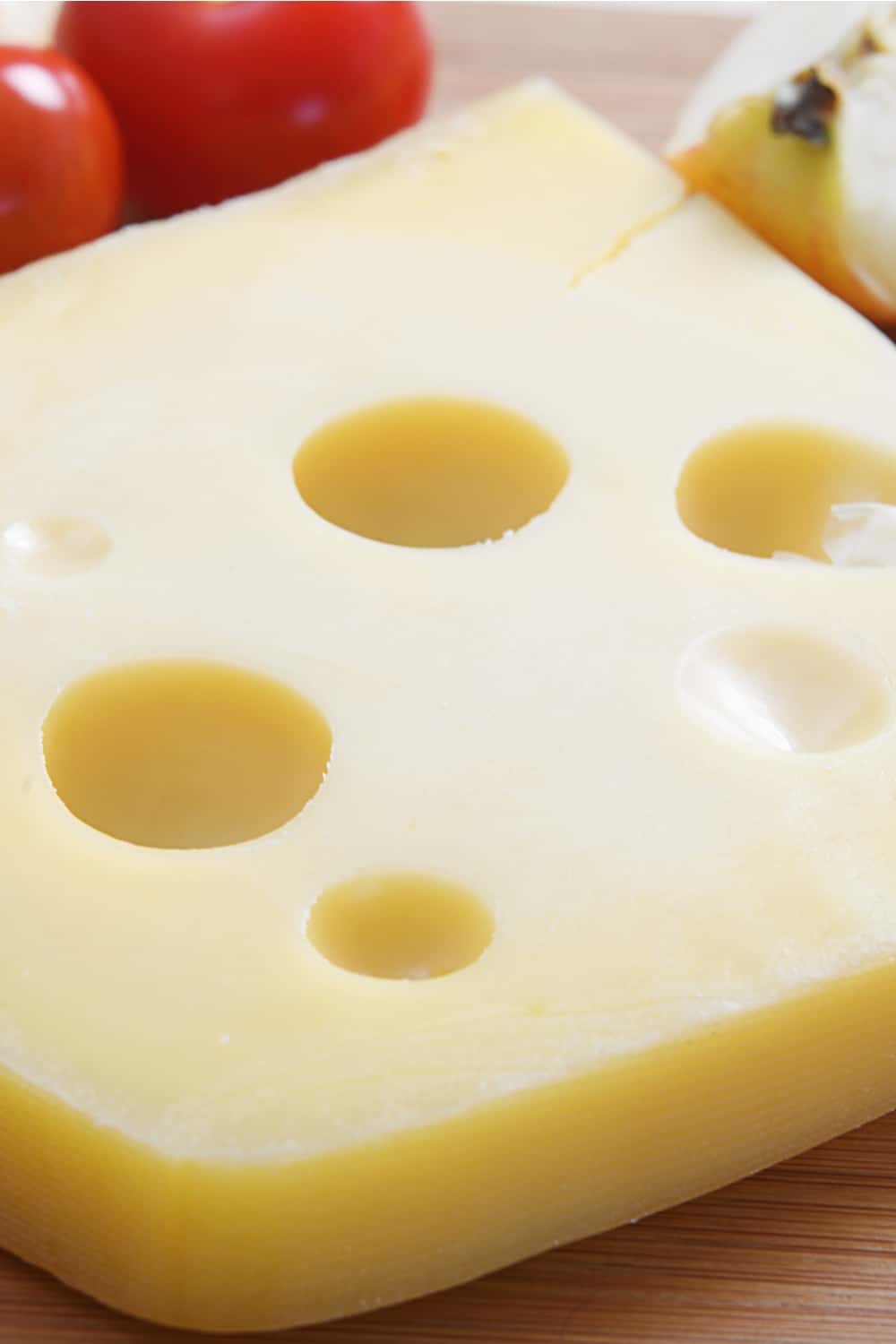
Jarlsberg is a semi-hard Norwegian cheese that was created in the mid-20th century and has gained popularity worldwide. Since its flavor profile is somewhat similar to that of Emmental, it can serve as a decent substitute.
Similarities:
• Jarlsberg cheese has a mild and nutty flavor, which is somewhat reminiscent of Emmental cheese.
• It also melts well, making it suitable for applications where melted cheese is desired.
• Although not as popular as other types of cheese on this list, Jarlsberg is actually quite versatile as it can be used in various culinary preparations.
Differences:
• Jarlsberg also has holes, but they are typically smaller and more evenly distributed compared to those of Emmental cheese.
• While Jarlsberg cheese melts well, it may not have the same stretch and elasticity as Emmental when melted.
• Emmental cheese has a slightly sweeter and nuttier flavor, while Jarlsberg has a milder taste.
How To Use As A Substitute:
Although it is considered a mild cheese, Jarlsberg is still stronger than Emmental cheese, so you first need to take that into consideration when making a substitute.
You can use it in a 1:1 ratio, but if you prefer a more mild flavor, you can also use less of it.
When it comes to dishes, you can use it in almost any type of dish that requires Emmental cheese.
It melts great as well and it will provide them with a similar nutty flavor. It is a great fit for sandwiches, fondues, and it also goes on well on hot dishes.
You can also grate or shave it over salads instead of Emmentaler, and you can serve it on cheese boards and platters, as it has a similar appearance to that of Emmental cheese.
9. Havarti
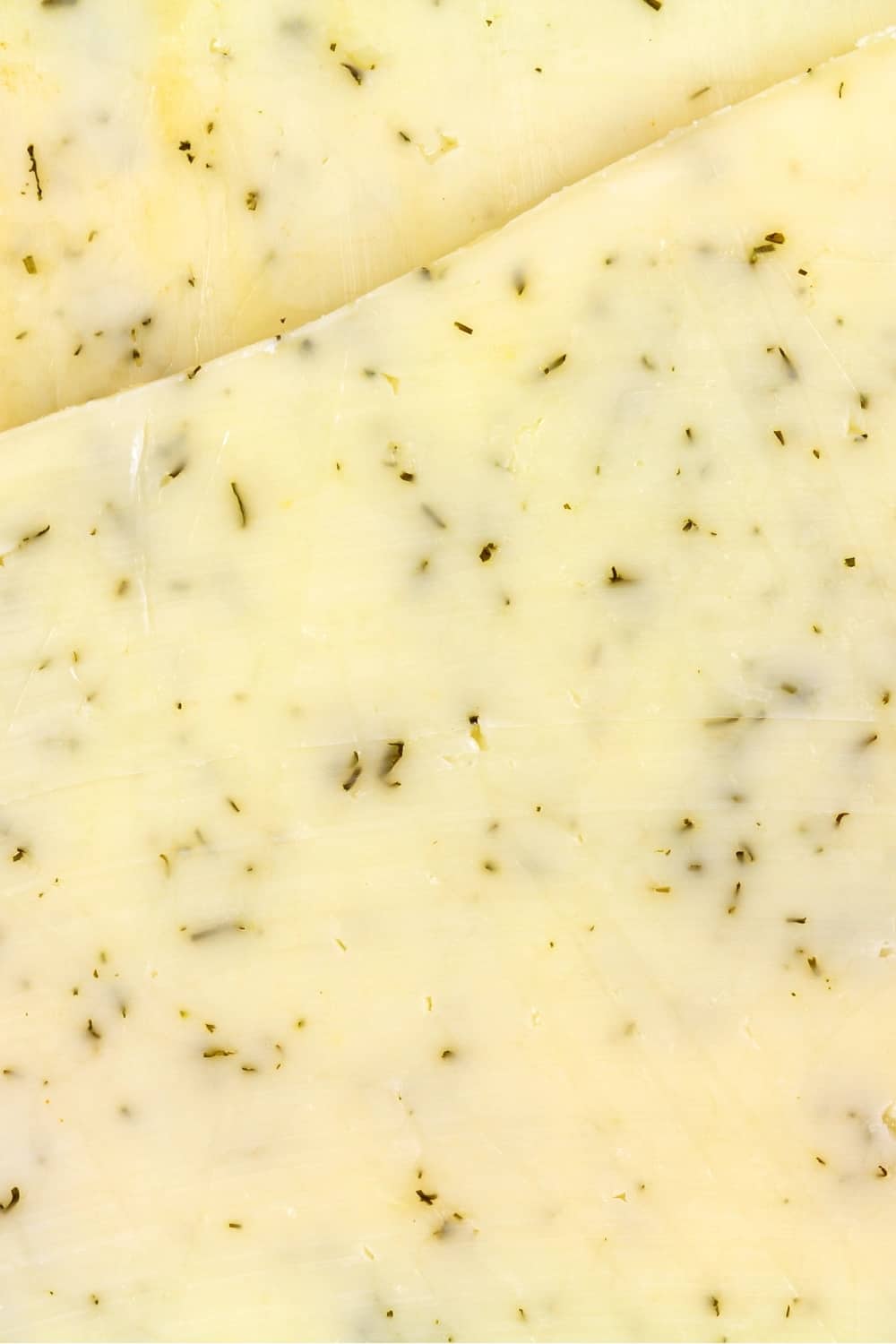
This food that starts with H is another semi-soft cheese classic. It originated in the 19th century and is named after the Danish experimental dairy farmer Hanne Nielsen, who first made this cheese. Now let’s see what it has to offer as a substitute.
Similarities:
• Havarti cheese has a smooth and creamy texture, similar to Emmental.
• It melts easily and evenly, creating a smooth and velvety consistency.
• It is also a very versatile cheese that can be used in various culinary dishes.
Differences:
• While Havarti cheese has a mild and buttery flavor, it lacks the distinct nuttiness found in Emmental cheese.
• Havarti cheese has a creamy and supple texture, but it lacks the characteristic holes or “eyes” found in Emmental.
• While Havarti cheese melts well and becomes creamy, it may not have the same stringy and stretchy melt as Emmental.
How To Use As A Substitute:
Havarti cheese has a similar appearance as Emmental cheese, so you can put a few slices on your cheese board or platter instead of Emmental.
It also pairs well with some alcoholic beverages, including wine and beer.
Since it melts quite well, you can use it in cheese fondue, and its creamy texture and mild flavor also make it perfect for grilled cheese sandwiches.
Some other dishes where it goes well include various vegetable dishes, savory tarts, cheeseburgers, pasta dishes, cheese dips, etc.
See Also: 12 Ideal Havarti Cheese Substitutes That Melt In Your Mouth
10. Brie
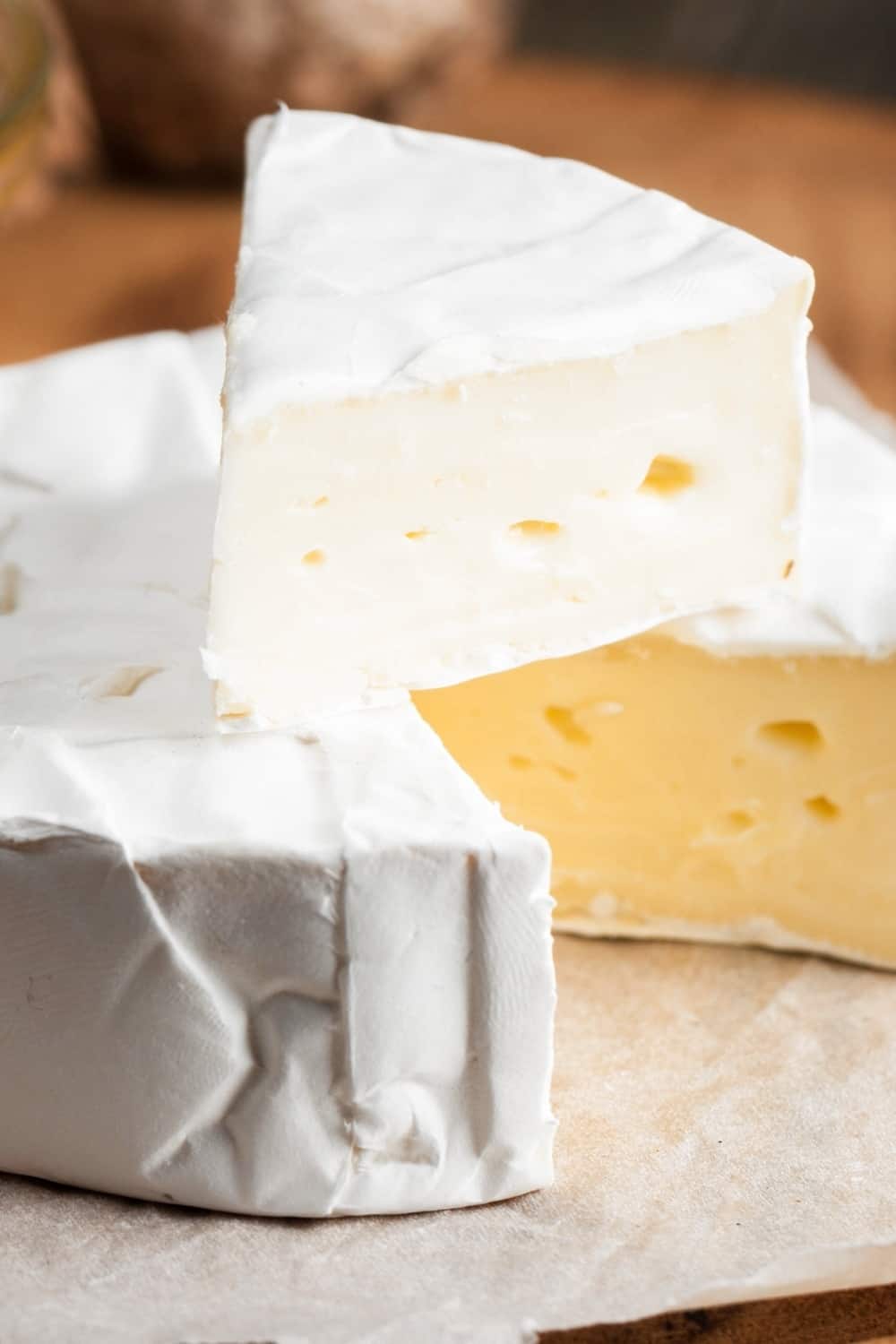
Brie cheese is a soft and creamy cheese that originated in France. It is named after the region of Brie in northern France where it was first produced. Like Emmental cheese, it is made from cow’s milk, so it can be a decent substitute.
Similarities:
• Brie cheese melts beautifully, forming a smooth and creamy consistency.
• Brie cheese is also incredibly versatile in the kitchen.
Differences:
• Brie cheese has a distinct flavor profile characterized by its creamy, buttery taste. It lacks the nuttiness and slightly sharper flavor of Emmental cheese.
• It has a soft and spreadable texture, while Emmental cheese has a firmer and denser texture with characteristic holes.
How To Use As A Substitute:
Brie cheese is often used as an appetizer, as you can dip other foods into it. However, it can also be used in many recipes, as well as in those that require Emmental cheese.
Brie cheese’s creamy texture and melting properties make it a great choice for baked dishes.
Brie cheese is also an excellent option for paninis and sandwiches, especially grilled cheese sandwiches, as it also has decent melting properties.
Finally, you can even use it in sweet dessert preparations. Pair it with fruits like apples, pears, or figs for a delicious and elegant dessert. Brie’s creamy and slightly tangy flavor provides a delightful contrast to the sweetness of the fruit.
